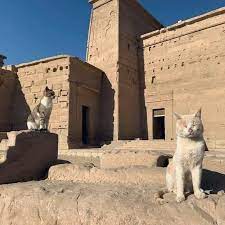Despite Muhammad's treatment of the Jewish tribe the Banu Qurayza, he was not opposed to tolerance of the Jewish religion. He felt the Qurayza had betrayed him during the Battle of the Trench, and so needed severe punishment.
The Constitution of Medina—more accurately called the Umma Document, since it was not organized as a real constitution—was a series of documents produced during Muhammad's time in Medina that formed the basis of a multi-religion state. Its earliest record is from a few generations after Muhammad's death, but Western and Islamic scholars consider it genuine.
Its supposed origin was this: while Muhammad was still in Mecca, a delegation from Medina approached him. Medina was home to a few large tribes and dozens of smaller tribes. Hostility between the Jewish and pagan Quraysh tribes had been going on for a few generations, and Medina needed a trusted outside arbitrator to come and end the "eye for an eye" style of dealing with disputes. The 12 strongest tribes of Medina offered to protect Muhammad if he came to Medina to help them resolve the ongoing feuds.
Here are some of the points of the document:
(1) This is a prescript of Muhammad, the Prophet and Messenger of God (to operate) between the faithful and the followers of Islam from among the Quraysh and the people of Medina and those who may be under them, may join them and take part in wars in their company.
(12) (a) And the believers shall not leave any one, hard-pressed with debts, without affording him some relief, in order that the dealings between the believers be in accordance with the principles of goodness and justice.
(13) And the hands of pious believers shall be raised against every such person as rises in rebellion or attempts to acquire anything by force or is guilty of any sin or excess or attempts to spread mischief among the believers ; their hands shall be raised all together against such a person, even if he be a son to any one of them.
(14) A Believer will not kill a Believer [in retaliation] for a non-Believer and will not aid a non-Believer against a Believer.
(15) The protection (dhimmah) of Allah is one, the least of them [i.e., the Believers] is entitled to grant protection that is binding for all of them. The Believers are each other’s allies to the exclusion of other people.
In that last point, the word dhimmah literally means "protected person" and was applied to Jews and Christians as well as Muslims—the "People of the Book." I have mentioned it before in its plural form (dhimmi) mostly here and here.
Sharia law allowed Jewish communities to have their own courts in place of some Islamic laws (unless there were a capital offense that violated #s 13 and 14). About 200 years after Muhammad and the Umma Document, one caliph decided tolerance of non-Muslims wasn't to his taste, and he made changes. I'll discuss him tomorrow.













